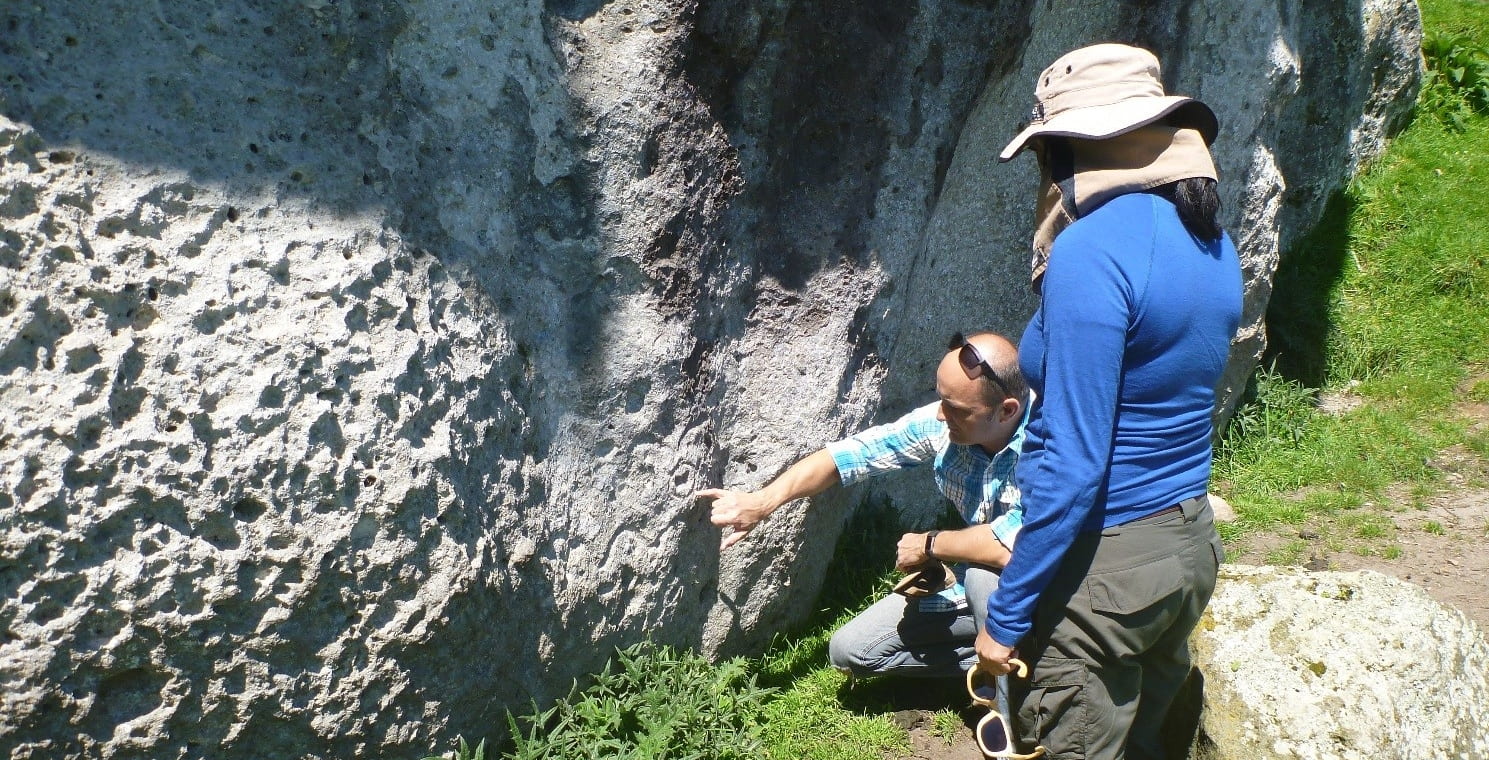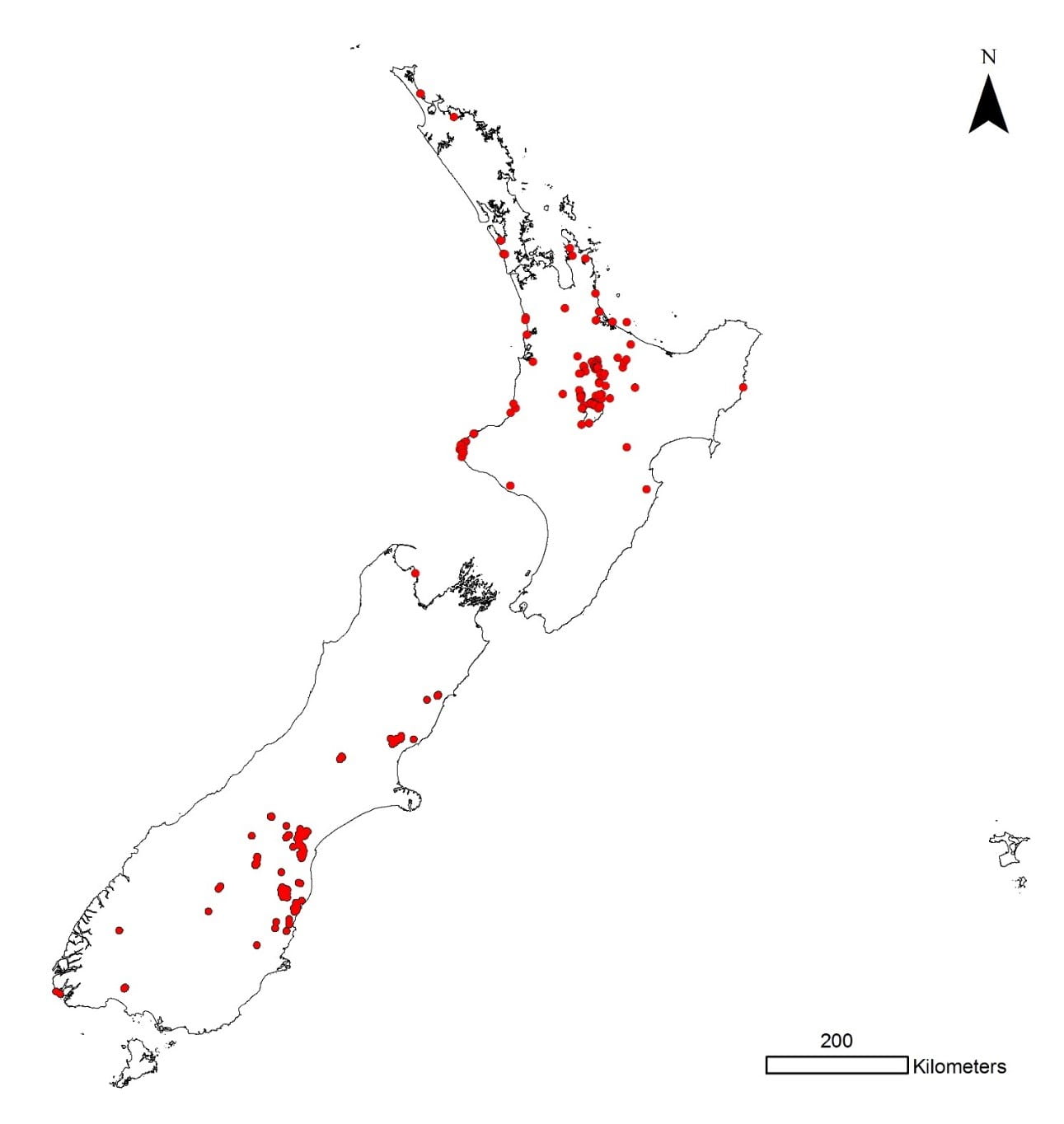
An Archaeological database for threatened North Island rock art in New Zealand
Noel Zeng, Centre for eResearch, Dr. Gerard O’Regan, James Henare Māori Research Centre, Katy Butterworth, Connect (Digital Services)

Noel Zeng, Centre for eResearch, Dr. Gerard O’Regan, James Henare Māori Research Centre, Katy Butterworth, Connect (Digital Services)
Introduction
Rock art offers an important window into the worldview of past people. With over 700 sites containing thousands of figures, New Zealand has one of the largest bodies of rock art in Polynesia. Over 150 Māori rock art sites are known of in the North Island, but very little is understood about the heritage that is being lost to weathering and environmental change. ‘Initiating a Māori archaeology of threatened North Island rock art’ is a Marsden Fast Start project looking into this. It explores the question of whether rock art was a traditional common practice across North Island iwi, or if it reflects unrelated local innovations in landscape marking. Archival and newly recorded archaeological data from across the North Island are being integrated to allow comparative analysis of rock art motifs and their wider landscape contexts. In doing so, the project is also establishing a better information platform for Māori communities to shape future archaeology of North Island rock art.establishing a better information platform for Māori communities to shape future archaeology of North Island rock art
A first step towards addressing this, is to initiate a systematic archaeological review of Māori rock art sites across the Island1,2. This review requires an information system that must be responsive to archaeological inquiry in the short term and manageable as community level archives in the long term. It has to facilitate ready access to rock art records by iwi communities whilst also protecting their cultural property interests. We describe the researcher-centric process followed to understand requirements and design an appropriate data schema as well as the software solution created that enables electronic data collection and query for this review of heritage information. Describing the existing archaeological field data collection solutions we evaluated, we also share lessons learned, challenges faced, and future directions envisaged for the software solution. Our team includes Dr. Gerard O’Regan who is an archaeological research fellow and is the Principal Investigator of the review. He evaluated existing information systems in New Zealand and found they did not fully address the kind of recording and archiving need for the North Island rock art project. Enlisting the support of the Centre for eResearch at the University of Auckland to create an appropriate information system for this research endeavor, a team was formed with Noel Zeng and Katy Butterworth as the primary developers for the software solution.

Solution Description
We designed a data schema that captures current and past location, status and context information of rock art sites. Using the data schema, we then implemented an information system as a relational database with data entry and query forms. This uses FileMaker3, a cross-platform relational database platform that incorporates graphical user interface design and scripting tools. We have ensured that data from the database can be exported to be used in other software for further query and analysis. An offline functionality has also been implemented to allow for data browsing, query and entry without Internet connection, such as in remote sites without cell network coverage. Changes made offline can be synchronised to the master database instance.
Process
These were the South Island Māori Rock Art Project database established by the Ngāi Tahu iwi 2, and ArchSite4, the web-interface of the New Zealand Archaeological Association Site Record Scheme, the officially recognised inventory of archaeological sites in NZ. This resulted in a list of feature requirements and a data schema that formed a basis for evaluating solution options.
Different data collection solutions and platforms were explored and evaluated for their ability to address our requirements. We narrowed down our options to either building a custom data collection solution using a relational database platform such as FileMaker or configuring an existing data collection platform such as the Field Acquired Information Management System (FAIMS)5. We decided to build a custom data collection application using FileMaker due to its flexibility and the availability of existing university infrastructure and expertise, and future usability and relevance for anticipated community users. We built the application and conducted usability testing with Dr. O’Regan and others and fine-tuned the system based in response to that testing. The finished application is now being deployed for data collection and query.

Figure 1: A screenshot of the information system.
Lessons Learned
Mapping out the research through its distinct stages has been valuable as a starting step, as has been thinking through the strengths and weaknesses of other systems. Usability testing has been vital for understanding what elements help users accomplish their goals in the system and what needs improvement. Keeping technology costs to a minimum has influenced decision making during development, and cost savings should be evaluated in terms of final stability and scalability of the application.
Future Directions
We plan to expand access to the database so that it supports the management of the dataset by iwi communities, while respecting the cultural property interests of each iwi. This requires implementing a user account system that protects access to information that is sensitive to each iwi.
In response to an international call to better protect rock art, the Marsden project is the first step in establishing a Māori archaeology of North Island rock art that enhances knowledge and care by kaitiaki and landowners; grows community awareness, celebration and advocacy for the treasures; and supports preservation actions. Unique to archaeology in New Zealand, the project brings together kaitiaki Māori from across the Island to examine archaeological data, foster inter-iwi knowledge exchange, and grow a collective understanding of rock art heritage. The approach recognises indigenous rights, supports local capacity building, and ensures mātauranga Māori is factored into the future management of this heritage and new research questions to be asked. The new database is a fundamental tool for helping to carry these endeavours into the future.
Acknowledgments
We acknowledge the valuable contributions and suggestions to this project from our colleagues Sina Massoud-Ansari, Jenny Lee Roper, Yvette Wharton, Janet Cheah, Joshua Emmitt and Cameron MacLean. An opportunity to evaluate the SIMRAP database was kindly provided by the Ngāi Tahu Māori Rock Art Trust with valuable advice from Matthew Hill.
References
- Royal Society Te Apārangi, A new archaeology of our threatened Māori rock art. Available from: https://royalsociety.org.nz/what-we-do/funds-and-opportunities/marsden/awarded-grants/marsden-fund-highlights/2017-marsden-highlights/archaeology-of-threatened-maori-rock-art/, accessed 20 August 2019.
- O’Regan, G., Rebuilding Māori knowledge of rock art in New Zealand, in Art on the Rocks, Engaging the Public and Professionals to Network for Rock Art Conservation. Abstracts from the Colloquium, Namibia, 22-30 April 2017. The Getty Conservation Institute: Los Angeles, CA, USA.
- Claris FileMaker. Available from: https://www.filemaker.com/, accessed 20 August 2019.
- Available from: http://www.archsite.org.nz/Default.aspx, accessed 20 August 2019.
- Field Acquired Information Management System. Available from: https://www.fedarch.org/, accessed 20 August 2019.
See more case study projects

Our Voices: using innovative techniques to collect, analyse and amplify the lived experiences of young people in Aotearoa

Painting the brain: multiplexed tissue labelling of human brain tissue to facilitate discoveries in neuroanatomy

Detecting anomalous matches in professional sports: a novel approach using advanced anomaly detection techniques

Benefits of linking routine medical records to the GUiNZ longitudinal birth cohort: Childhood injury predictors

Using a virtual machine-based machine learning algorithm to obtain comprehensive behavioural information in an in vivo Alzheimer’s disease model

Mapping livability: the “15-minute city” concept for car-dependent districts in Auckland, New Zealand

Travelling Heads – Measuring Reproducibility and Repeatability of Magnetic Resonance Imaging in Dementia

Novel Subject-Specific Method of Visualising Group Differences from Multiple DTI Metrics without Averaging

Re-assess urban spaces under COVID-19 impact: sensing Auckland social ‘hotspots’ with mobile location data

Aotearoa New Zealand’s changing coastline – Resilience to Nature’s Challenges (National Science Challenge)

Proteins under a computational microscope: designing in-silico strategies to understand and develop molecular functionalities in Life Sciences and Engineering

Coastal image classification and nalysis based on convolutional neural betworks and pattern recognition

Determinants of translation efficiency in the evolutionarily-divergent protist Trichomonas vaginalis

Development of an online Community Engagement Platform (CEP) to facilitate out-facing collaborative research

Measuring impact of entrepreneurship activities on students’ mindset, capabilities and entrepreneurial intentions

Using Zebra Finch data and deep learning classification to identify individual bird calls from audio recordings

Automated measurement of intracranial cerebrospinal fluid volume and outcome after endovascular thrombectomy for ischemic stroke

Using simple models to explore complex dynamics: A case study of macomona liliana (wedge-shell) and nutrient variations

Fully coupled thermo-hydro-mechanical modelling of permeability enhancement by the finite element method

Modelling dual reflux pressure swing adsorption (DR-PSA) units for gas separation in natural gas processing

Molecular phylogenetics uses genetic data to reconstruct the evolutionary history of individuals, populations or species

Wandering around the molecular landscape: embracing virtual reality as a research showcasing outreach and teaching tool
























































































































































